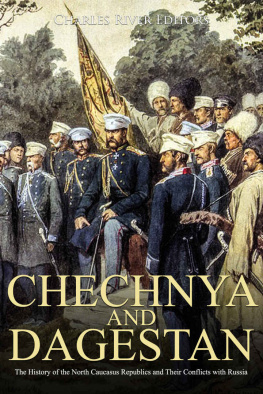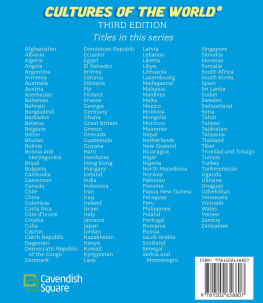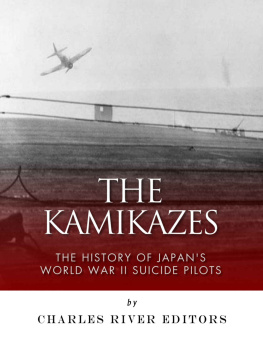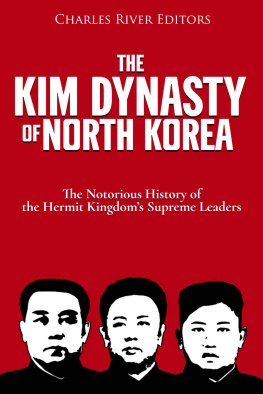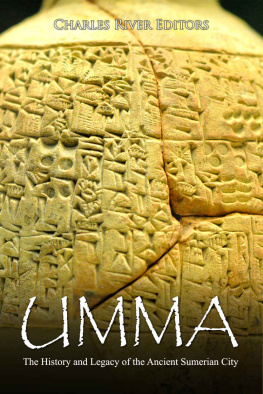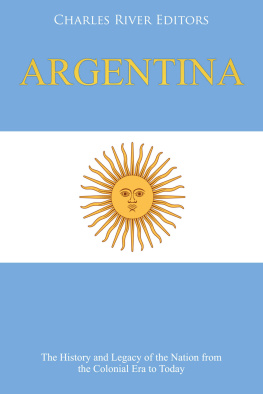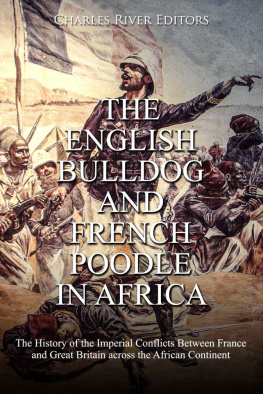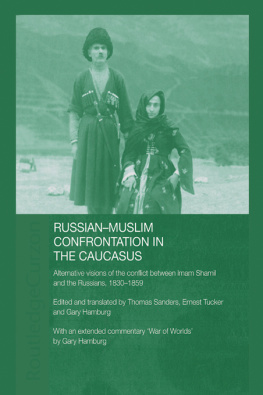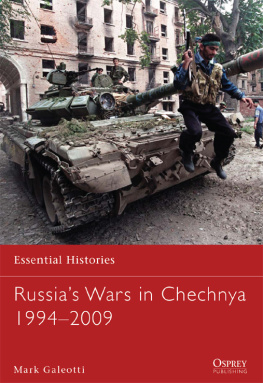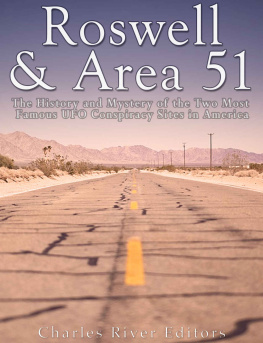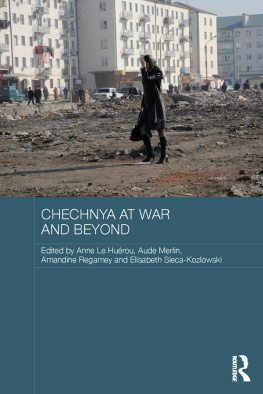Charles River Editors - Chechnya and Dagestan: The History of the North Caucasus Republics and Their Conflicts with Russia
Here you can read online Charles River Editors - Chechnya and Dagestan: The History of the North Caucasus Republics and Their Conflicts with Russia full text of the book (entire story) in english for free. Download pdf and epub, get meaning, cover and reviews about this ebook. year: 2019, publisher: Charles River Editors, genre: Religion. Description of the work, (preface) as well as reviews are available. Best literature library LitArk.com created for fans of good reading and offers a wide selection of genres:
Romance novel
Science fiction
Adventure
Detective
Science
History
Home and family
Prose
Art
Politics
Computer
Non-fiction
Religion
Business
Children
Humor
Choose a favorite category and find really read worthwhile books. Enjoy immersion in the world of imagination, feel the emotions of the characters or learn something new for yourself, make an fascinating discovery.
- Book:Chechnya and Dagestan: The History of the North Caucasus Republics and Their Conflicts with Russia
- Author:
- Publisher:Charles River Editors
- Genre:
- Year:2019
- Rating:4 / 5
- Favourites:Add to favourites
- Your mark:
- 80
- 1
- 2
- 3
- 4
- 5
Chechnya and Dagestan: The History of the North Caucasus Republics and Their Conflicts with Russia: summary, description and annotation
We offer to read an annotation, description, summary or preface (depends on what the author of the book "Chechnya and Dagestan: The History of the North Caucasus Republics and Their Conflicts with Russia" wrote himself). If you haven't found the necessary information about the book — write in the comments, we will try to find it.
Chechnya and Dagestan: The History of the North Caucasus Republics and Their Conflicts with Russia — read online for free the complete book (whole text) full work
Below is the text of the book, divided by pages. System saving the place of the last page read, allows you to conveniently read the book "Chechnya and Dagestan: The History of the North Caucasus Republics and Their Conflicts with Russia" online for free, without having to search again every time where you left off. Put a bookmark, and you can go to the page where you finished reading at any time.
Font size:
Interval:
Bookmark:
By Charles River Editors

The Chechen Republics flag

Charles River Editors is a boutique digital publishing company, specializing in bringing history back to life with educational and engaging books on a wide range of topics. Keep up to date with our new and free offerings with this 5 second sign up on our weekly mailing list , and visit Our Kindle Author Page to see other recently published Kindle titles.
We make these books for you and always want to know our readers opinions, so we encourage you to leave reviews and look forward to publishing new and exciting titles each week.
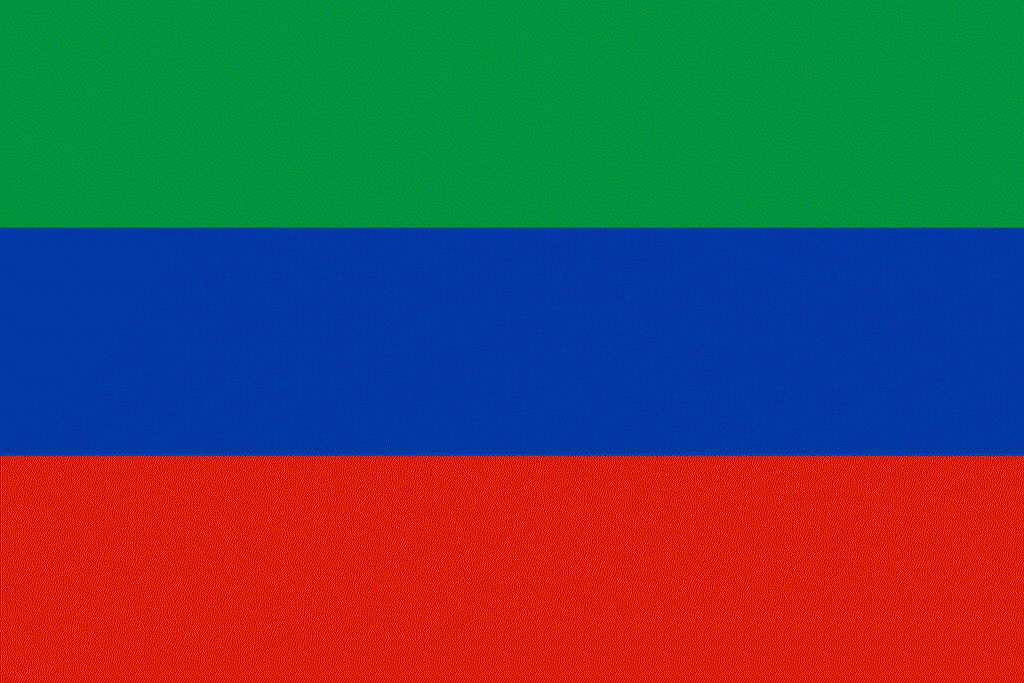
Dagestans flag
"There is no people under the sun more vile and deceitful than this one." Soviet inscription on a statue of 19 th century Russian general Aleksey Yermolov in Grozny
Troops assembled villagers and townspeople, loaded them onto trucks many deportees remembered that they were Studebakers, fresh from Lend-Lease deliveries over the Iranian border and delivered them at previously designated railheads....Those who could not be moved were shot....[A] few fighters aside, the entire Chechen and Ingush nations, 496,460 people, were deported from their homeland. Norman Naimark
Today, Chechnya is a republic with some degree of autonomy in the contemporary Russian Federation. Its population is just over a million people, and it stretches over an area of 17,000 square kilometers. The majority of Chechnyas population is comprised of Sunni Muslims, meaning religion has played a key role in the territorys development. In southwestern Russia, landlocked within 100 kilometers of the Caspian Sea, Chechnya is north of the Caucasian mountains, bordering other North Caucasus provinces such as North Ossetia, and Dagestan, and Georgia.
Russia itself is a well-established Slavic, Orthodox Christian country, though its majority Muslim provinces were not obvious to outsiders until the post-Soviet conflicts of the 1990s. The history of the Chechen people in the region is, nevertheless, long-established, and Chechnya has become synonymous with conflict, civil war, and discontent. While many people are aware of that, few understand how things reached that point. The area is complex and fascinating, representing one of the worlds true fault lines in terms of religion, empire, and geography.
Wedged in the North Caucasus mountain range and bordering the Caspian Sea, Dagestan is a true meeting point of cultures, religions and geopolitical rivalries. A crossroad between east and west, Dagestan has been vitally important at different times for various powers in Asia, Europe, and the Middle East, and even between different religious and ethnic groups. In spite of all that, and in large measure because of it, Dagestans society is a composite of these rivalries over the centuries.
Today, Dagestan is part of the Russian Federation, but its history happens to be both indicative and idiosyncratic of the regions fascinating and complex development. Dagestan shares many similarities with its smaller neighbor to the west, Chechnya, without receiving as much attention from outside historians and journalists. This is despite the fact Dagestan is home to around three million inhabitants with a range of languages, ethnicities and religions. Islam is the dominant religion at over 80% of the population, with the majority being Sunni Muslims, but the majority ethnic group, the Ayars, only make up about 30% of the population. Dagestans capital city is little-known Makhachkala, and the rest of the country contains spectacular mountain ranges of over 12,000 feet in height, as well as lakes and major rivers like the Terek, Sulak and Samur.
This geography has made Dagestan particularly difficult for outsiders to dominate, but the relationships with outside powers nevertheless provided the tensions that runs through the history of Dagestan. Having come into contact with the Persians, Ottomans, Russians, and even Western European states, Dagestan has both been a melting point and at times almost hermetically sealed to intruders for centuries, making it one of the worlds true fault lines in terms of religion, empire, and geography. As a result, Dagestan has never truly been conquered despite its modern position within Russia. It has always retained some degree of autonomy while outsiders, not least the Russians, have treated the country with a certain level of wariness.
Chechnya and Dagestan: The History of the North Caucasus Republics and Their Conflicts with Russia examines the history of one of the most controversial regions in the world. Along with pictures depicting important people, places, and events, you will learn about Chechnya and Dagestan like never before.
Archaeological evidence suggests that Chechnya was settled by 8000 BCE, possibly through migration from the so-called Fertile Crescent in todays Middle East. Incursions from outsiders, most notably Mongol invaders and Russian imperialists, have also affected the character of these two groups.
The Chechnyan terrain played a key role in the culture of its inhabitants, most notably because the region is isolated and difficult for outsiders to navigate. In the north of Chechnya lies the Nogay Steppe, leading to the lower lands and valleys of the Terek and Sunzha Rivers. In the south of the country lie the Caucasus mountains, a foreboding range with the highest peak (Mount Tebulosmta) reaching a height of over 15,000 feet. The city of Grozny is located roughly in the middle of Chechnya, just south of the Terek River, while the west and southwest parts of Chechnya are inhabited mainly by the Ingush.
Chechnya is simultaneously a hostile territory to outsiders due to its mountainous terrain and geopolitically important. The entire Caucasus region has been fought over for centuries, positioned as a crossroads between East and West on trade routes, relatively near the sea, and with repositories of natural resources and energy. Evidence suggests the region was prone to invasions for centuries, including those from long-forgotten peoples such as the Cimmerians and Scythians.
By the time the Macedonians came to prominence under King Philip II (359-336 BCE) and especially under his son and successor, Alexander the Great (336-323 BCE), the eastern Scythians were firmly part of the Achaemenid Empire, but the western Scythians were still nominally independent. The western Scythians status began to change, though, when another Indo-European people known as the Sarmatians began to push them south of the Danube into Macedonia and Thrace (Rice 1957, 49). The migration was not welcomed by Alexander, and the Macedonians saw the Scythians as an invading horde best dealt with violently. As a result, the western Scythians, like their brethren in the east, joined the Achaemenid Persians in the war against the Macedonian Greeks.
The Scythians remained in the Black Sea region for a few more centuries, but in the centuries after their defeat by Alexander, the Scythians increasingly found themselves pressured from all sides by the Sarmations, Romans, and Parthians. The Scythians tried and true tactics on the battlefield were no longer applicable in a new age where better technologies and organization trumped their mobility. Perhaps emulating their more technologically advanced neighbors and enemies, the Scythians established a permanent capital at the city of Neopolis on the north shore of the Black Sea in 110 BCE. Eventually, Scythian territory was divided by the Romans and Parthians, and while some aspects of Scythian culture continued for a few more centuries, by the 2 nd century CE, the last vestiges of Scythian culture were wiped out by the Goths (Rice 1957, 50).
Font size:
Interval:
Bookmark:
Similar books «Chechnya and Dagestan: The History of the North Caucasus Republics and Their Conflicts with Russia»
Look at similar books to Chechnya and Dagestan: The History of the North Caucasus Republics and Their Conflicts with Russia. We have selected literature similar in name and meaning in the hope of providing readers with more options to find new, interesting, not yet read works.
Discussion, reviews of the book Chechnya and Dagestan: The History of the North Caucasus Republics and Their Conflicts with Russia and just readers' own opinions. Leave your comments, write what you think about the work, its meaning or the main characters. Specify what exactly you liked and what you didn't like, and why you think so.

